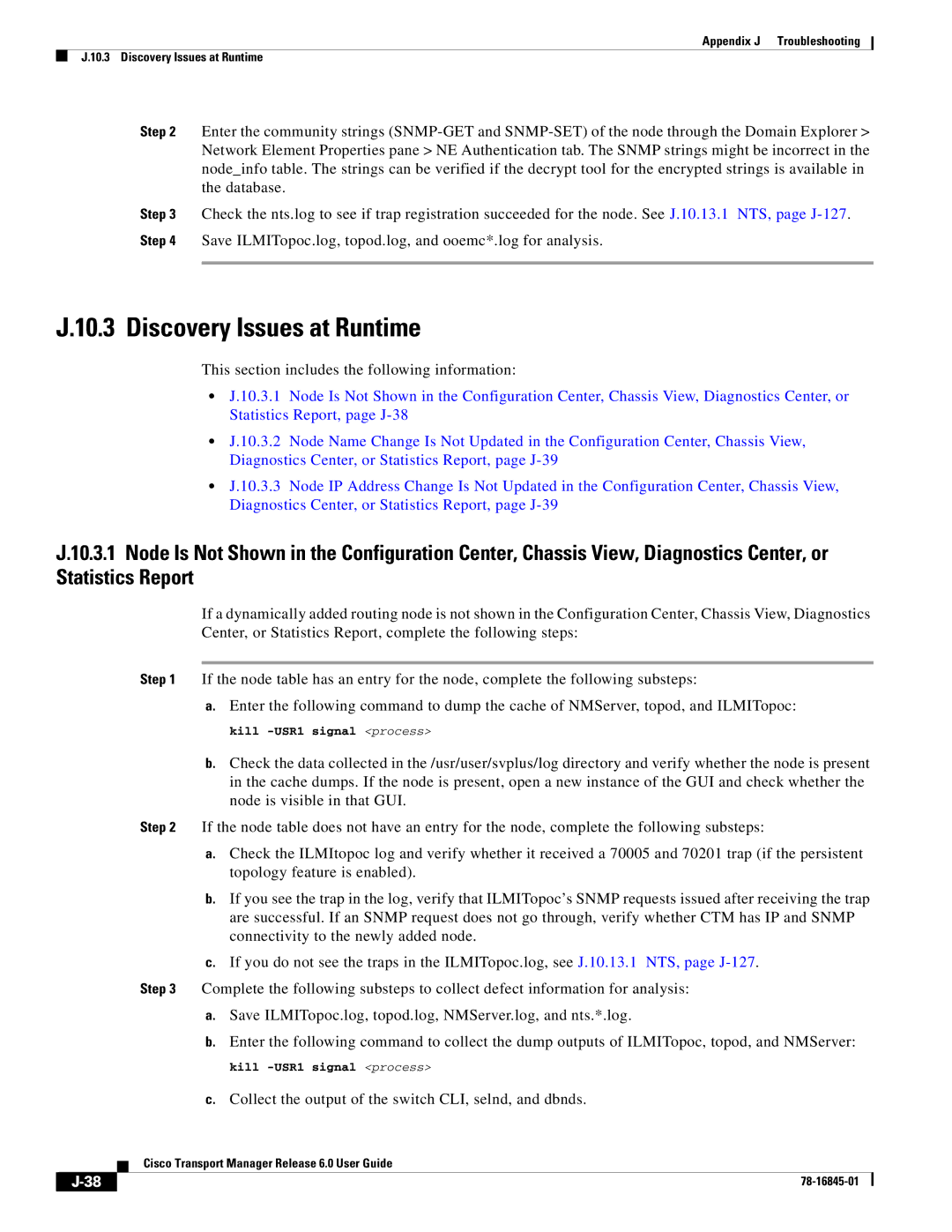
Appendix J Troubleshooting
J.10.3 Discovery Issues at Runtime
Step 2 Enter the community strings
Step 3 Check the nts.log to see if trap registration succeeded for the node. See J.10.13.1 NTS, page
J.10.3 Discovery Issues at Runtime
This section includes the following information:
•J.10.3.1 Node Is Not Shown in the Configuration Center, Chassis View, Diagnostics Center, or Statistics Report, page
•J.10.3.2 Node Name Change Is Not Updated in the Configuration Center, Chassis View, Diagnostics Center, or Statistics Report, page
•J.10.3.3 Node IP Address Change Is Not Updated in the Configuration Center, Chassis View, Diagnostics Center, or Statistics Report, page
J.10.3.1 Node Is Not Shown in the Configuration Center, Chassis View, Diagnostics Center, or Statistics Report
If a dynamically added routing node is not shown in the Configuration Center, Chassis View, Diagnostics Center, or Statistics Report, complete the following steps:
Step 1 If the node table has an entry for the node, complete the following substeps:
a.Enter the following command to dump the cache of NMServer, topod, and ILMITopoc:
kill
b.Check the data collected in the /usr/user/svplus/log directory and verify whether the node is present in the cache dumps. If the node is present, open a new instance of the GUI and check whether the node is visible in that GUI.
Step 2 If the node table does not have an entry for the node, complete the following substeps:
a.Check the ILMItopoc log and verify whether it received a 70005 and 70201 trap (if the persistent topology feature is enabled).
b.If you see the trap in the log, verify that ILMITopoc’s SNMP requests issued after receiving the trap are successful. If an SNMP request does not go through, verify whether CTM has IP and SNMP connectivity to the newly added node.
c.If you do not see the traps in the ILMITopoc.log, see J.10.13.1 NTS, page
Step 3 Complete the following substeps to collect defect information for analysis:
a.Save ILMITopoc.log, topod.log, NMServer.log, and nts.*.log.
b.Enter the following command to collect the dump outputs of ILMITopoc, topod, and NMServer:
kill
c.Collect the output of the switch CLI, selnd, and dbnds.
Cisco Transport Manager Release 6.0 User Guide
|
| ||
|
|
